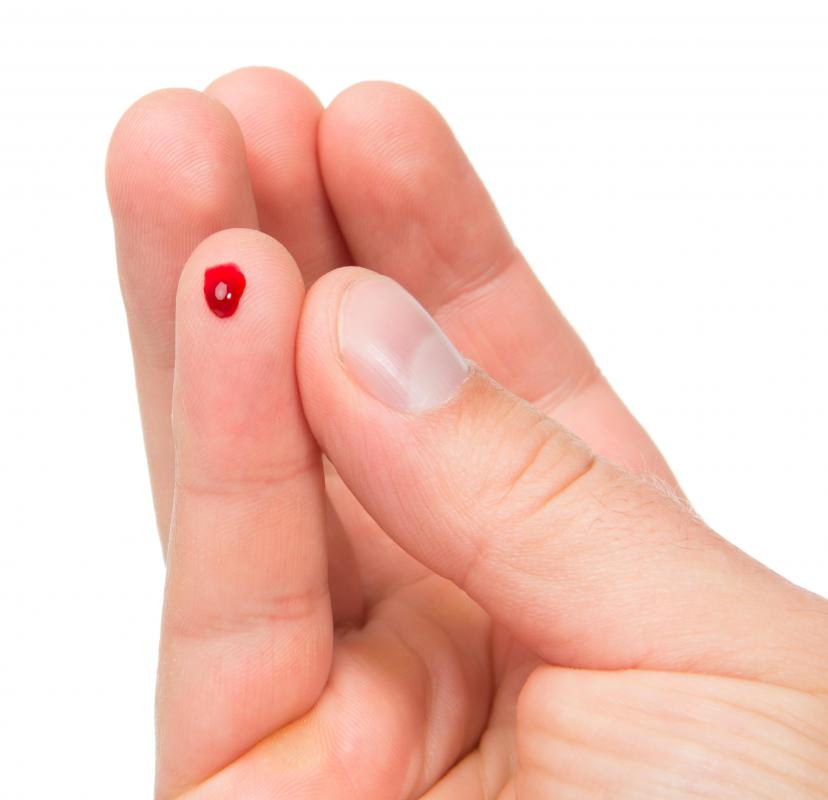At WiseGEEK, we're committed to delivering accurate, trustworthy information. Our expert-authored content is rigorously fact-checked and sourced from credible authorities. Discover how we uphold the highest standards in providing you with reliable knowledge.
What are the Different Kinds of Hemorrhage Treatments?
Hemorrhage treatments include but are not limited to the methods and techniques of direct pressure, elevation, tourniquet application and the use of hemostatic agents. They also include the use of pressure points, the use of a pneumatic anti-shock garment (PASG), splinting, cold application, surgery and more. There are various hemorrhage treatments because there are different kinds of bleeding. These treatments can be used singly or in combinations to effectively control hemorrhage.
Direct pressure refers to applying pressure directly to a bleeding external wound. This method typically involves using a sterile dressing, but in the case of severe hemorrhage, emergency medical technicians (EMTs) and paramedics will immediately place their gloved hand over the wound until a sterile dressing is available. If there is no suspicion of a muskuloskeletal injury, sometimes elevation above the level of the heart is used to allow gravity to help slow bleeding from an extremity. Military medics and many civilian medics in the United States also use hemostatic agents as part of the various hemorrhage treatments on which they rely.

Hemostatic agents usually come in the form of a dressing that is placed directly in the wound. These hemorrhage treatments contain a special substance that is highly absorbent and designed to trap red blood cells, speeding the time it take for clotting to occur. Other forms of hemostatic agents are granular forms and powder, both of which can be packed directly into the wound. Use of pressure points involves applying direct pressure over an artery to restrict bleeding as much as possible. For example, if a person's forearm is bleeding profusely, a medic might use the pressure point technique by applying pressure to the brachial artery, which is located in the upper arm, to help arrest distal bleeding or bleeding beyond the point of the artery.

The use of a PASG, although controversial, is considered among the list of effective hemorrhage treatments. It not only helps to control bleeding from the lower extremities, is also is a form of direct pressure to control internal hemorrhage in the pelvic and abdominal areas. Although many people do not readily consider splinting to be one of the hemorrhage treatments used in medicine, it is very effective and is often necessary to control bleeding in cases of muskuloskeletal injuries. When a bone is fractured, especially a large one such as the thigh bone, severe blood loss can occur as the sharp ends of fractured bone slide and cut vessels. Splinting helps to stabilize these internal "knives."

A tourniquet is a device that almost completely restricts the flow of blood to an extremity and generally is used as a last resort when considering hemorrhage treatments. Closing off the blood flow to an extremity can end up causing the need for an amputation. Tourniquet use, however, is no longer a life-or-limb decision unless applied on the battlefield or when used in remote areas such as the wilderness because arrival to a medical facility could take longer than an hour.
Cold application can assist in the control of bleeding because cold helps to restrict the blood vessels. This is a time-tested technique, but it should be used only in conjunction with one or more of the other hemorrhage treatments. There is medication for a hemorrhage that a doctor might prescribe, and severe internal hemorrhage almost always requires surgery as a treatment.
AS FEATURED ON:
AS FEATURED ON:













Discuss this Article
Post your comments